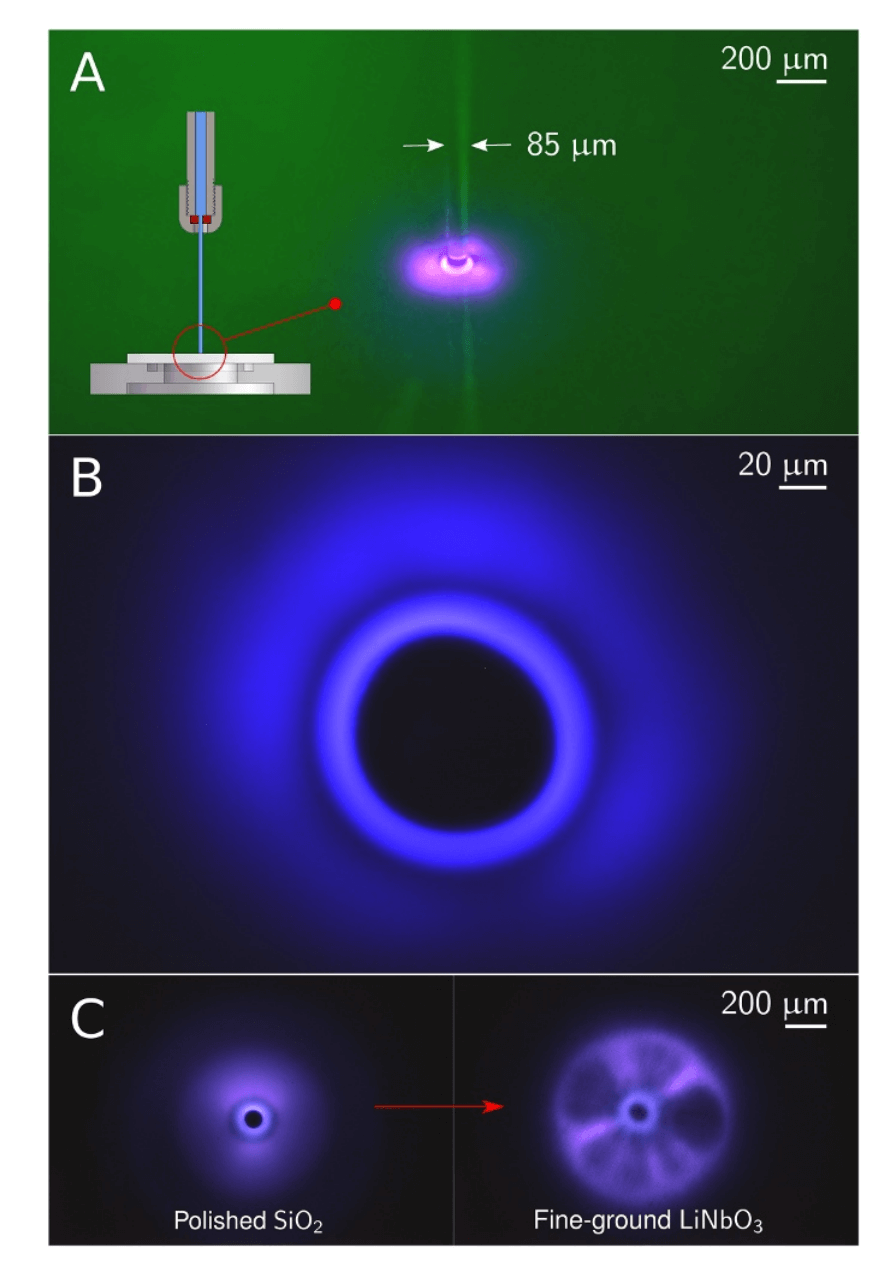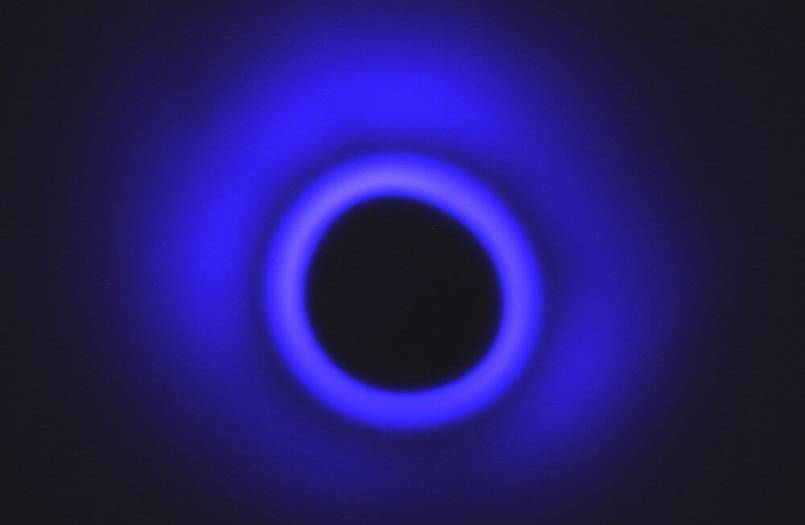A torus of plasma, viewed from above. The ring is created by a jet of water striking a crystal plate. Image credit: Mory Gharib/Caltech
Until the 1920s there was a well-established belief that matter can exist only in three states; solid, liquid, and gas which are also called the fundamental states of matter. But in the 1920s Irving Langmuir first described one more state of matter called the plasma state of matter which consisted of gas of ions and free electrons. This state of matter exists in the natural phenomena like lightning, and in the weather phenomenon called St. Elmo's fire (in which glowing balls of light sometimes appear on pointed objects during storms). It can also occur in man-made objects such as fluorescent light bulbs, plasma TV, and plasma cutting torches.
Plasma usually does not have its own definitive shape. During Earth's lightning, the formed plasma follows a path of least resistance through the air and the man-made plasmas are confined by vacuum chambers or electromagnetic fields. The advanced concepts of plasma are predictive to be useful in clean energy generation and also in some form of fuel.
Developing a plasma at a room temperature environment has been a difficult task. Atmospheric pressure plasmas have a considerable scientific and engineering span ranging from analytical chemistry, material processing, environmental science, energy, medicine, biology, and low-temperature plasma physics to microelectronics and display technology.
For the first time, researchers from the California Institute of Technology (Caltech) described a way to create a stable plasma ring in the open air. The paper describing their work was published in the journal Proceedings of the National Academy of Sciences (PNAS) on November 16, 2017.
Francisco Pereira of the Marine Technology Research Institute in Italy, a visiting scholar at Caltech and co-author said, "We were told by some colleagues this wasn't even possible. But we can create a stable ring and maintain it for as long as we want, no vacuum or magnetic field or anything."
Caltech researchers demonstrated a naturally formed, stable, unconstrained but topologically confined microscale toroidal plasma in air, at room temperature, and atmospheric pressure without external electromagnetic action.
For the experimental setup they designed a ruby nozzle with a 100-µm diameter opening and a nonelectric pump. A stream of deionized and bubble-free water having the diameter 85 µm at velocities 200 ms −1 was targeted at the surface of single-crystal quartz (SiO2) and single-crystal lithium niobate (Z-cut LiNbO3) wafers. For reference, the jet is equivalent to a stream narrower than a human hair moving about as fast as a bullet fired from a handgun. By this process a bright luminescent blue–pink spot appeared over the core region of the jet. The formed ring was stable, and as long as the water continues to flow, the ring maintains its shape and size.

Researchers explained that what they achieved was basically due to the induced friction. Both crystal plates of quartz and lithium niobate induced the triboelectric effect - in which an electric charge builds up because of friction with another material. When the jets hit the targeted crystal, water creates a smooth and laminar flow of positively charged ions across the negatively charged surface. In the region where the stream strikes at the surface, the triboelectric effect triggers a high flow of electrons through the water to its surface. This flow of electrons ionizes the atoms and molecules in the surrounding gas near the surface of the water and ultimately creates a donut, or torus, of glowing plasma that is dozens of microns in diameter and visible under a microscope.
On testing, researchers also found that smoother the projection surface, the clearer the structure of the plasma ring.
Further, researchers also found that the formed plasma ring emits distinct radio frequencies and they noticed this after their cell phones encountered high levels of static radio frequency noise while they were in the same room of the experiment. Pereira said, "That's never been seen before. We think it's because of the piezo properties of the materials that we used in our experiments."
The team was successful in developing the plasma ring without any externally imposed electric field between well-defined nodes. However, our observation of excitation and ionization spectral lines in the air suggests the presence of a strong electrostatic field in the neighborhood of the jet.
This work demonstrated the possibility to create a coherent plasma structure that is both chambers less and unconstrained by external forces, setting a unique paradigm in plasma physics. The confined and chamber less nature of the plasmoid would allow one to probe the collisional state in greater detail and investigate more effectively the physics of plasma– liquid interactions or of plasma scaling.
In 2013, Randy Curry and his team from the University of Missouri have developed a method of creating and controlling plasma that could revolutionize American energy generation and storage. However, those rings last just 10 milliseconds.
